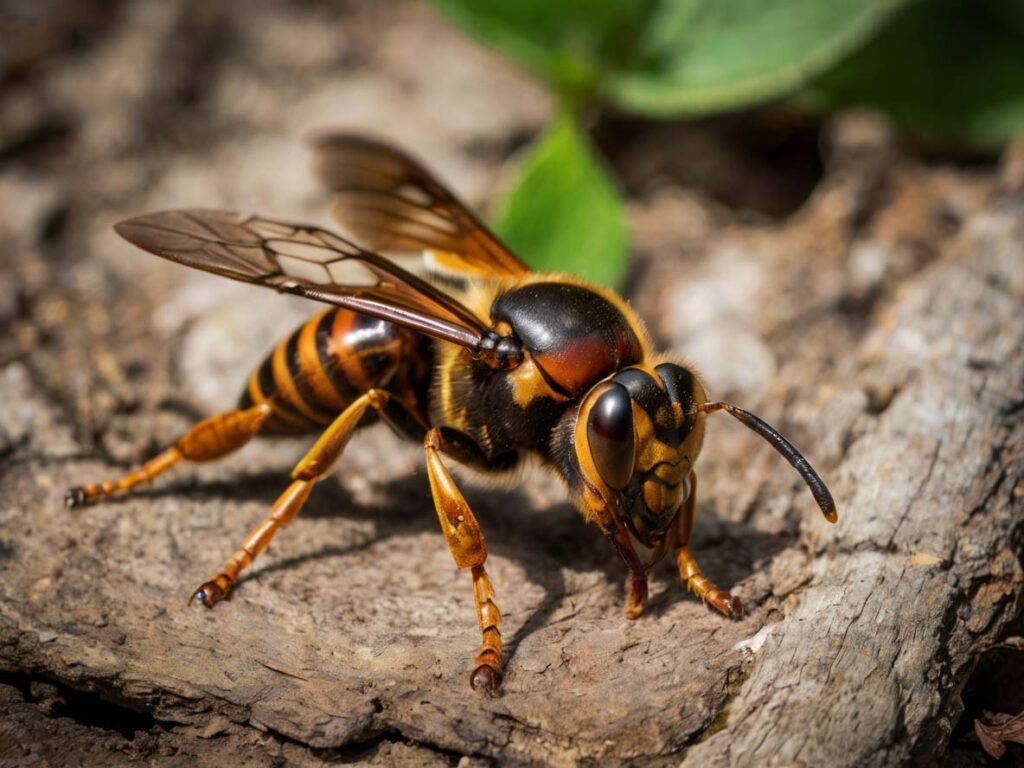As climate change and global trade continue to alter ecosystems around the world, Europe is now facing an unwelcome visitor: new species of hornets. This year, experts have sounded the alarm about several types of hornets migrating into European territories, raising concerns for public safety, agriculture, and the environment.
The Arrival of the Asian Hornet
One of the most concerning newcomers is the Asian hornet (Vespa velutina). Native to Southeast Asia, this invasive species has been making its way across Europe since its accidental introduction in France in 2004. Known for its distinctive dark body and yellow-tipped legs, the Asian hornet is particularly notorious for its aggressive behavior and predatory habits towards honeybees. Honeybee populations, crucial for pollination and agriculture, are at significant risk from these efficient predators.

New Hornets Approaching Europe This Year – The Giant Hornet: A Potential Threat
Another species on the radar is the Asian giant hornet (Vespa mandarinia), often referred to as the “murder hornet” due to its potent sting and aggressive nature. While primarily found in parts of Asia, there have been sporadic reports of sightings in Europe. These hornets are the largest in the world, with queens reaching up to two inches in length. Their presence poses a serious threat not only to honeybees but also to humans and animals due to their powerful venom.
Factors Driving Their Spread
Several factors contribute to the spread of these hornets into Europe:
- Climate Change: Warmer temperatures and milder winters make new regions habitable for hornets that previously could not survive in colder climates.
- Global Trade: Increased international trade and travel can inadvertently transport hornets across continents. For instance, shipping containers and cargo planes are common means by which these insects can stow away and establish new populations far from their native lands.
- Adaptability: Hornets are highly adaptable creatures. They can establish nests in a variety of environments, from rural areas to urban centers, making it easier for them to spread and thrive.
The Impact on Ecosystems and Human Health
The introduction of new hornet species can have profound effects on local ecosystems and public health:
- Biodiversity Loss: Predation on native bees and other insects can disrupt local ecosystems and reduce biodiversity.
- Agricultural Damage: With honeybee populations under threat, crop pollination suffers, potentially leading to decreased yields and higher food prices.
- Human Safety: Hornet stings can cause severe allergic reactions and even fatalities in some cases. Their presence in populated areas increases the risk of human encounters.

What Can Be Done?
Governments and researchers across Europe are working on strategies to monitor and control the spread of these hornets. Public awareness campaigns are crucial, educating people on how to identify these hornets and report sightings to local authorities. Additionally, efforts to trap and eradicate nests before they can become firmly established are underway.
Professional Pest Control Services
At Discreet Pest Control, we understand the importance of maintaining a safe and healthy environment. Our professional pest control services include hornet nest removal, ensuring that your home and surroundings are protected from these dangerous invaders. Our experienced team uses the latest techniques and safety measures to effectively handle hornet infestations.
New Hornets Approaching Europe This Year
If you suspect a hornet nest on your property or have noticed an increase in hornet activity, don’t hesitate to contact us. We offer thorough inspections and customized solutions to meet your specific needs. Trust Discreet Pest Control to safeguard your home from the growing threat of hornets in Europe this year.
Contact us today for expert advice and reliable pest control services!









